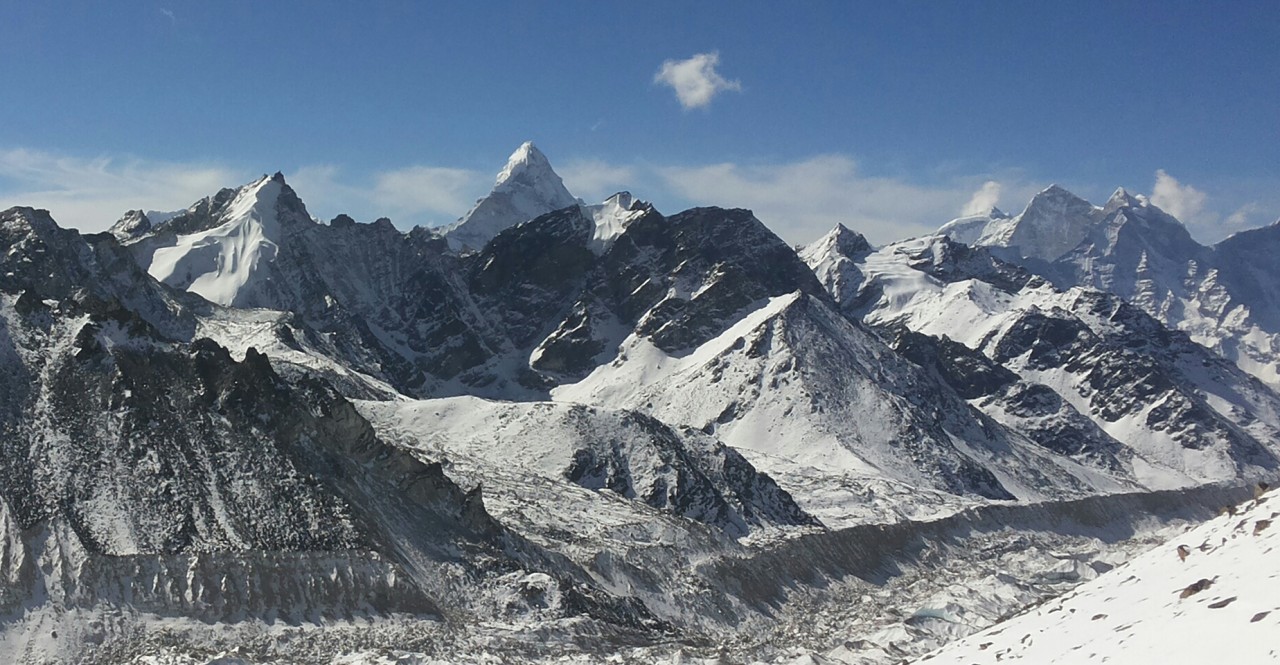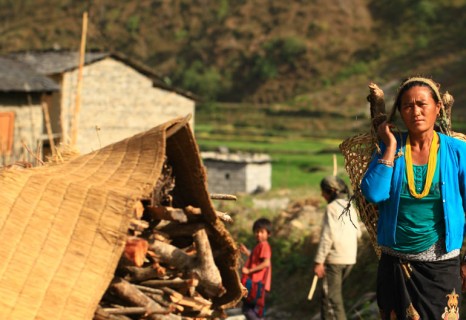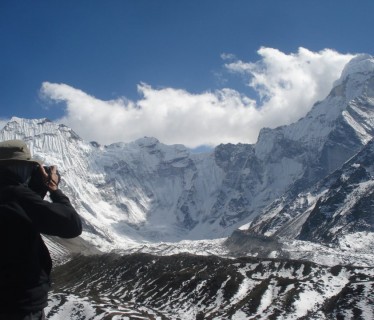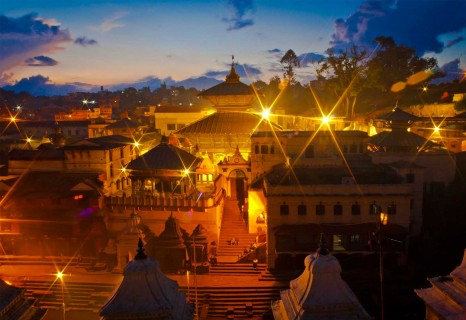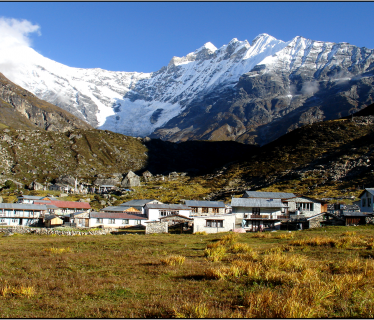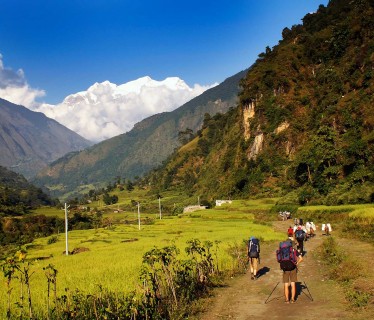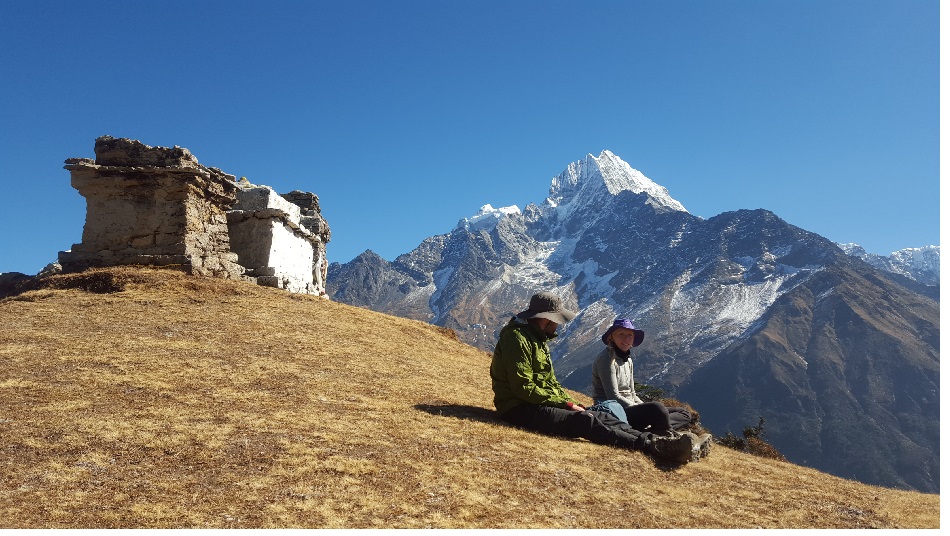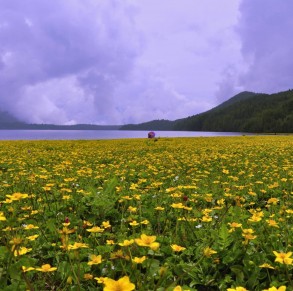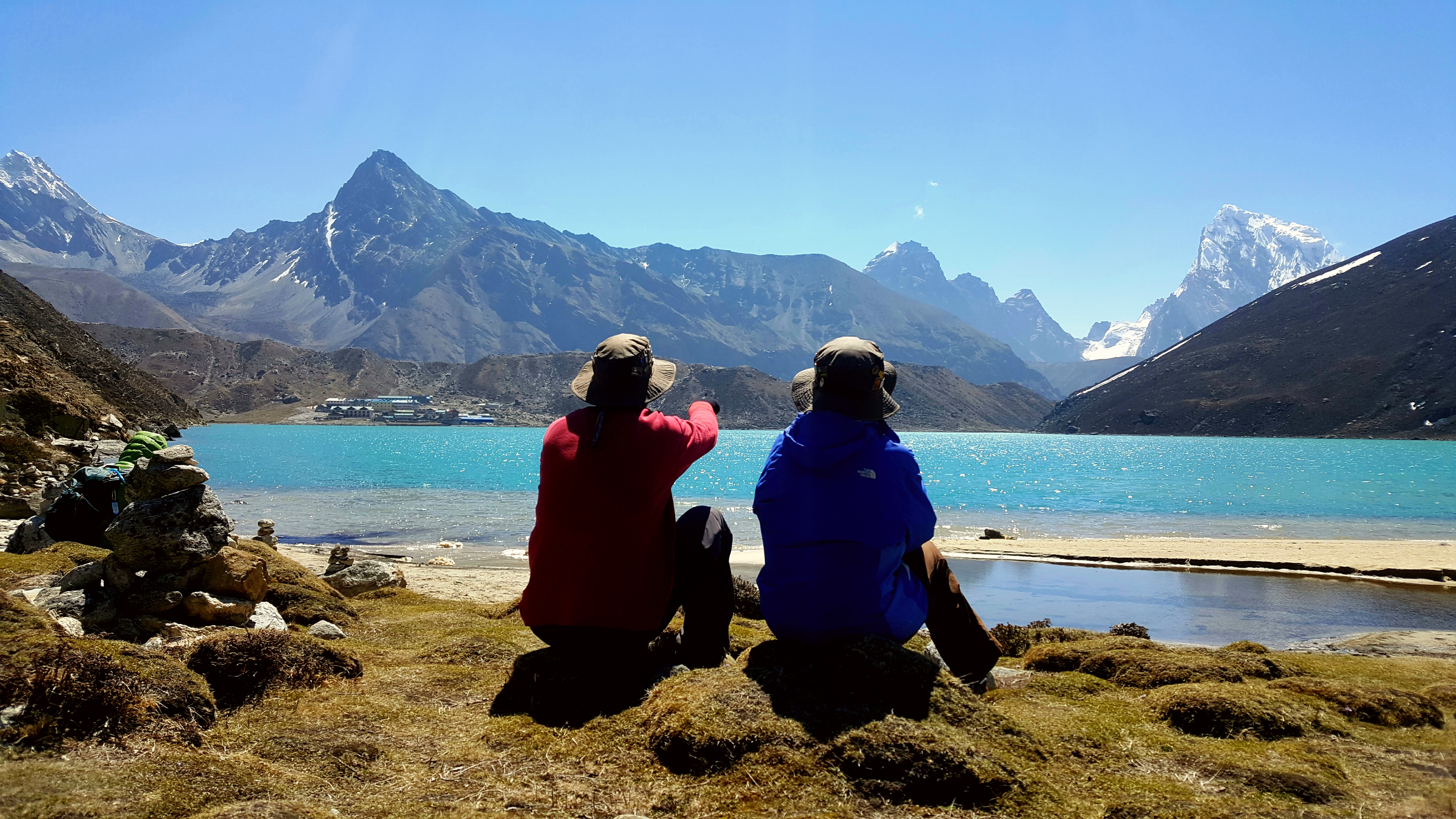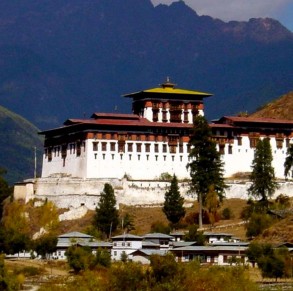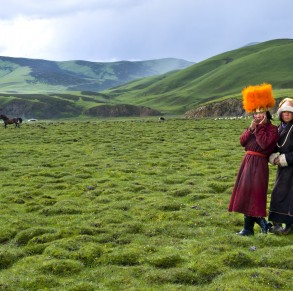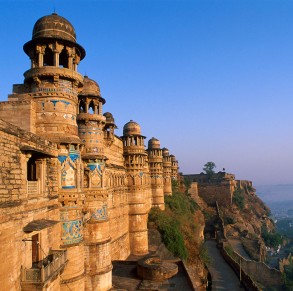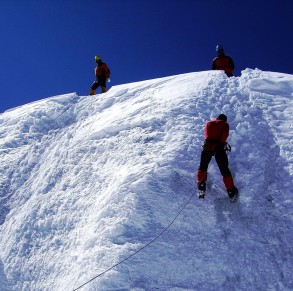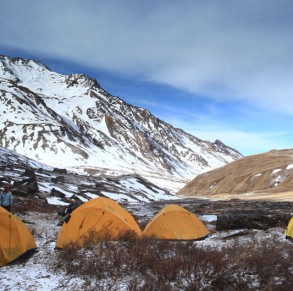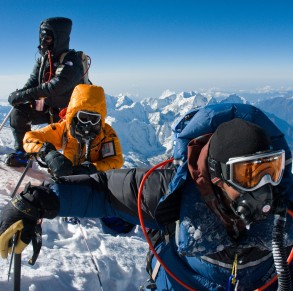Day 01: Kathmandu/Lukla (2,840 m) by flight. Trek to Phakding (2,652m) – 3 to 4 hours
Day 02:Trek to Namche Bazaar (3,440m) – 4½ to 5½ hours
Day 03: Acclimatization in Namche Bazaar
Day 04: Trek to Thame (3,844 m) – 4 to 5 hours
Day 05: Trek to Lungden (4,380 m)
Day 06: Rest Day and Acclimatization Day in Lungden.
Day 07: Cross Renjo La (5,388 m) to Gokyo (4,791 m) 8 –9 hours
Day 08: An explore day at Gokyo (4,791 m)
Day 09: Trek to Dragnak (4,700 m) – 5 to 6 hours
Day 10: Cross Cho La (5,368 m) to Dzongla (4,830 m) – 8 to 9 hours
Day 11: Trek to Lobuche – 2½ hours
Day 12: Lobuche to Gorakshep (5,160 m) & climb Kalapattar (5,545m) – 5 to 6 hours
Day 13: Trek to Everest Base Camp (5,364 m) and back Gorakshep – 5 to 6 hours
Day 14: Trek to Lobuche – 2½ hours
Day 15: Cross Kongma La (5,535m) to Chukkung (4,720m) 8 – 9 hours walk.
Day 16: Climb Chukkung Ri (5,550m). Trek to Dingboche (4,410m) – 6 -7 hours walk.
Day 17: Trek to Tengboche (3,837 m) – 4 to 5 hours
Day 18: Trek to Monjo (2,835 m) – 5 to 6 hours
Day 19: Trek to Lukla (2,840m) – 4 to 5 hours
Day 20: Lukla to Kathmandu by flight (35 min flight).
Day 01: Kathmandu/Lukla (2,840 m) by flight. Trek to Phakding (2,652m) – 3 to 4 hours
We will make an early morning flight to Lukla (2,860 m.), the gateway to the Khumbu. This is an exciting flight, with a glimpse of Everest in the distance.
Day 02:Trek to Namche Bazaar (3,440m) – 4½ to 5½ hours
We will continue up the banks of the Dudh Koshi, crossing it twice by suspension bridges before reaching the Khumbu National Park. We will then cross the confluence of the Dudh Koshi and the Bhote Koshi on a high suspension bridge before climbing steeply for about two hours up ‘Namche Hill’ to reach Namche Bazaar. This is a prosperous trading town and the capital of the Khumbu Region. Many Tibetans cross the nearby border to trade their wares and the local market is a fascinating spectacle. This is a good place to buy genuine Tibetan artifacts. Just across the valley to the east stand the impressive peaks of Thamserku and Kangtega.
Day 03: Acclimatization in Namche Bazaar
We will spend a day in Namche Bazaar for better acclimatization. In the morning, we will walk up to Khumjung and glance-by the school as well as visit the Everest View Hotel (3,900m) before returning to Namche for lunch. The afternoon may be spent shopping or exploring the nooks and crannies of this ancient settlement.
Day 04: Trek to Thame (3,844 m) – 4 to 5 hours
From Namche, we leave the main Everest Base Camp trail behind us and journey north-west towards Tibet. We may meet Tibetans coming over the high passes and down the valley to trade their goods in Namche Bazaar. Thame is famous for being the birthplace of Tenzing Norgay.
Day 05: Trek to Lungden (4,380 m)
We will not find many more until we arrive at Gokyo, as Thame tends to be the limit of exploration for most people. So, the high valley beyond the village remains the simple domain of yaks, farming and Sherpas. Today we walk-by some very old, authentic Himalayan Villages that blend almost invisibly into the landscape. We eventually reach the small village of Lungden for the night.
Day 06: Rest Day and Acclimatization Day in Lungden.
Day 07: Cross Renjo La (5,388 m) to Gokyo (4,791 m) 8 –9 hours
It is a steady walk on a mostly path to reach beautiful, deserted valley, just below the Nangpa La. This pass is an historical and important trade route between Tibet and Nepal. It is still in use today, despite attempts to control the flow of goods and migrants over its’ snowy reaches.
The ascent of the Renjo-la is up a good but rocky path, which the locals frequently cross with yaks. The climb is bound to feel tough at these altitudes, so we make an early start to give ourselves plenty of time. Once on top of the pass, the views towards Everest to the east are some of the best. For a keen photographer, being within the mountains yet faced with such an expansive and open vista never fails to surprise, with Everest, Cho Oyu, Gyanchung Kang, Makalu, Nuptse and Ama Dablam all laid out before us. Having taken some time to enjoy these views, we begin the descent to Gokyo Lakes, down a fairly rough trail at first, before continuing steeply down a blunt ridge to eventually reach more level ground. From here we skirt the north side of the Dudh Pokhari travelling eastwards towards Gokyo Lakes.
Day 08: An explore day at Gokyo (4,791 m)
It is timely to have a rest day today as the previous day’s climb would have been pretty hard and we have tough days ahead. Gokyo is a relaxing place to stay and soak up breathtaking scenery. Today, we climb up the first of the 3 Peaks in our itinerary – perhaps the finest viewpoint in the world! From the top, we will get stunning views of Everest and other peaks such as Cho Oyu. We start early so we can witness the ink-black sky yield to the sun as it rises in the east and gracefully
bathes first Everest’s tip and then its great south-west face with an incandescent orange glow. We’ll be there after two to three hours of zig-zagging our way to the top.
Day 09: Trek to Dragnak (4,700 m) – 5 to 6 hours
As soon as we are ready, we set off on the trail once more, heading now for the far side of the glacier to camp at Dragnak. The route across the moraine of the glacier is mostly on sandy trails that weave amongst the ‘moonscape’ of the glacier. On the far side, we reach the small hamlet of Dragnag having walked for 2 to 3 hours from Gokyo.
Day 10: Cross Cho La (5,368 m) to Dzongla (4,830 m) – 8 to 9 hours
This is a big day, as we tackle the second of the High Passes. We need to set off very early in the morning to ensure that we cross the Cho La and descend to Dzongla in good time. At first, we make a very gradual ascent alongside the river up a small valley to eventually reach a sandy ridgeline. This gives a great view of the Cho La ahead and of some daunting 6,000m peaks to the north and south: Nirekha Peak, Kangshung Peak and Cholatse, among them. We make a long, gradual descent on a pleasant grassy path to reach a lunch stop below the pass. After lunch, the ground becomes steeper and rockier; it is time to pack away our trekking poles. The route weaves around boulders at first, before climbing up onto stonier ground. There is a final steep section to reach the pass itself. This is on loose ground, which can often be icy, so we need to take great care; it might be necessary to fix a short section of rope as well as to use crampons, which we will have with us just in case. The top of the pass is glaciated and we walk across a flat section of snow for about 15 minutes before dropping off the side and back onto rock. With Dzongla below us and now in sight, we pick our way down the far side of the pass and descend into a lovely valley. A stream that meanders along the bottom leads us to our campsite where we take a well-deserved rest
.
Day 11: Trek to Lobuche – 2½ hours
In the morning, if we have not done so already, we have another chance of reaching the top of Kalapattar. Without a need to rush, we retrace our steps back, alongside the Khumbu Glacier, to reach Lobuche, where we spend the night. Tomorrow is another big day, as we plan to tackle the third of the High Passes, to place us ready and in position for the last of our 3 Peaks.
Day 12: Lobuche to Gorakshep (5,160 m) & climb Kalapattar (5,545m) – 5 to 6 hours
About three hours beyond Lobuche, we reach Gorakshep. From here, we explore the surrounding area and visit the real Everest Base Camp. After lunch, and feeling well settled, we strike out for the top of our Second Peak, Kalapattar – the Black Rock. This is best tackled in the late afternoon to be on the top in the early evening, as the sun to the west will illuminate Everest with a kinder and more generous light for photographs, than when it’s in the eastern sky. If we each have a warm jacket and hat, it won’t matter if we’re on top as the sun sets, to see the alpenglow slip off Everest’s summit, as the lights in the lodges far below will guide us like stars back to our camp and a warm bowl of soup before dinner.
Day 13: Trek to Everest Base Camp (5,364 m) and back Gorakshep – 5 to 6 hours
The trail leads on to the moraine of the Khumbu Glacier as it weaves between mounds of rubble. After about 3 hours, we will eventually reach base camp near the foot of the Khumbu Icefall. Base Camp is actually spread over quite a wide area and we will spend some time wandering through it and getting a sense of what it must be like to be camped there for two whole months, whilst attempting the mountain.
Day 14: Trek to Lobuche – 2½ hours
In the morning, if we have not done so already, we have another chance of reaching the top of Kalapattar. Without a need to rush, we retrace our steps back, alongside the Khumbu Glacier, to reach Lobuche, where we spend the night. Tomorrow is another big day, as we plan to tackle the third of the High Passes, to place us ready and in position for the last of our 3 Peaks.
Day 15: Cross Kongma La (5,535m) to Chukkung (4,720m) 8 – 9 hours walk.
Much underrated, the Kongma La is a challenging pass and a more interesting way to approach the Imja Valley than via Dugla and Dingboche, as is usual for most trekking parties. The path is steep at first but eventually reaches the top of the pass. Here, the views from the Kongma La are really spectacular, especially towards Makalu in the east, of Ama Dablam’s North Ridge and of Nuptse towering immediately over our heads. Passing by some glacial lakes and yak pastures on the descent, Chukkung is a small settlement reached in about 4 hours from the pass.
Day 16: Climb Chukkung Ri (5,550m). Trek to Dingboche (4,410m) – 6 -7 hours walk.
We will have a quick breakfast to warm us before we head off on our final challenge. From the hamlet, the path quickly leads upwards, crossing open grassy slopes and heading directly for the towering massif of Lhotse that stands indomitably behind our mountain. Being well acclimatized and very fit after 2 weeks of Himalayan walking, this peak should come more quickly than the othersBut, it will remain tough to get to the top and the zig-zags will appear as daunting as any taken so far. Nevertheless, as the sun breaks on the horizon, we expect the warming sky to greet us as we make the final steps up rocky blocks. Once more, prayer flags mark our summit and seal our triumph. The views from the top are as stupendous as we have come to expect. But, this time the views allow us to trace out our great journey across the Khumbu with the Dudh Koshi draining south, to Lukla and the Terai beyond, whilst to the west we glance over the Cho La and Gokyo towards Tibet. Gazing over Ama Dablam and onwards to Namche Bazaar, to our backs stands the gigantic wall of Lhotse. It is hard to imagine a more fitting way to finish such a majestic tour of the Khumbu Himal, than to stand among, but at the feet of such towering giants.
Day 17: Trek to Tengboche (3,837 m) – 4 to 5 hours
Following the main Everest trail down the beautifully scenic valley, we pass through Pangboche at the base of Ama Dabkam and cross the river before climbing to the monastery at Tengboche. Some time exploring the famous monastery. A circuit of the monastery, with its many prayer wheels is not to be missed, as is an exploration of the inside.
Day 18: Trek to Monjo (2,835 m) – 5 to 6 hours
From Teangboche, a steep descent leads through bird-filled rhododendron bushes and fir trees to the Dudh Koshi at Phunki Dingma. From here, we have to climb up the opposite bank but now with a huge advantage compared with those toiling in the opposite direction and yet to become accustomed to the rarefied air. .We continues on the path leading back to Namche Bazaar. We should have enough time in Namche to shop and relax in the bakery with a coffee and a cake, or even to check the Internet. We sweep down the steep descent of Namche Hill back to the suspension bridge over the Dudh Koshi and into the small village of Monjo.
Day 19: Trek to Lukla (2,840m) – 4 to 5 hours
The trail now flattens out and we cross the river twice more before a rising traverse up the hillside, past numerous teahouses to Lukla. Our last day of steady trekking will be a real joy as, at lower altitudes and nothing left to prove, we can soak up the atmosphere in each of the villages as we amble through. All excess energy is guaranteed to be exhausted at our party this evening with our Nepalese crew.
Day 20: Lukla to Kathmandu by flight (35 min flight).
An early morning flight. We will be met at the domestic airport in Kathmandu. Drive to hotel in Kathmandu. Rest day free.


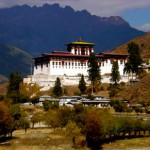
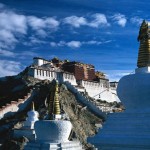
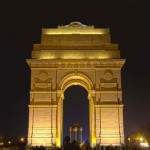

 English
English